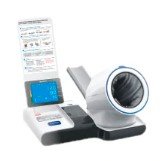Improving Electronic Health Records Interoperability for Phlebotomy Data
Summary
- Increased interoperability of Electronic Health Records
- Standardization of data formats
- Improved communication between lab technicians and Healthcare Providers
The Importance of Electronic Health Records in Phlebotomy
Electronic Health Records (EHRs) have revolutionized the way patient data is stored and accessed in the healthcare industry. This is especially true for phlebotomy, where accurate and timely information is crucial for providing proper care to patients. EHRs allow for seamless sharing of lab results, making it easier for Healthcare Providers to make informed decisions regarding diagnosis and treatment.
The Challenge of Interoperability in EHRs
Despite the many benefits of EHRs, interoperability remains a significant challenge in the healthcare industry. Different systems often use different formats and standards, making it difficult to share and access data across platforms. This is particularly true for phlebotomy data, as lab results need to be accurately transmitted to Healthcare Providers in a timely manner.
Potential Solutions to Improve EHR Interoperability for Phlebotomy Data
Increased Interoperability of Electronic Health Records
One of the key solutions to improving EHR interoperability for phlebotomy data is to increase the compatibility of different systems. This can be achieved through the development of common standards and protocols that all EHR vendors must adhere to. By ensuring that data is stored and transmitted in a uniform manner, Healthcare Providers can easily access and share lab results without any compatibility issues.
- Implementing standardized data formats
- Developing interoperability guidelines for EHR vendors
- Creating a centralized database for lab results
Standardization of Data Formats
Another potential solution is to standardize the formats in which phlebotomy data is stored and transmitted. By establishing common data schemas and protocols, Healthcare Providers can easily extract and interpret lab results from different EHR systems. This would not only improve the efficiency of data sharing but also reduce the risk of errors and Discrepancies in patient records.
- Adopting HL7 standards for lab results
- Utilizing FHIR protocols for data exchange
- Implementing data validation processes to ensure accuracy
Improved Communication Between Lab Technicians and Healthcare Providers
Lastly, enhancing communication between lab technicians and Healthcare Providers can help improve the interoperability of EHRs for phlebotomy data. By ensuring that all relevant information is accurately documented and transmitted, Healthcare Providers can make more informed decisions regarding patient care. This can be achieved through regular training and education on proper data entry procedures and the importance of accurate documentation.
- Establishing clear communication protocols between labs and Healthcare Providers
- Providing training on EHR usage and data entry best practices
- Implementing regular audits to review data quality and accuracy
Conclusion
Improving Electronic Health Records interoperability for phlebotomy data is crucial for enhancing patient care and streamlining healthcare processes. By implementing common standards, standardizing data formats, and improving communication between lab technicians and Healthcare Providers, the industry can overcome the challenges associated with interoperability and ensure that patient data is accurately shared and accessed in a timely manner.

Disclaimer: The content provided on this blog is for informational purposes only, reflecting the personal opinions and insights of the author(s) on the topics. The information provided should not be used for diagnosing or treating a health problem or disease, and those seeking personal medical advice should consult with a licensed physician. Always seek the advice of your doctor or other qualified health provider regarding a medical condition. Never disregard professional medical advice or delay in seeking it because of something you have read on this website. If you think you may have a medical emergency, call 911 or go to the nearest emergency room immediately. No physician-patient relationship is created by this web site or its use. No contributors to this web site make any representations, express or implied, with respect to the information provided herein or to its use. While we strive to share accurate and up-to-date information, we cannot guarantee the completeness, reliability, or accuracy of the content. The blog may also include links to external websites and resources for the convenience of our readers. Please note that linking to other sites does not imply endorsement of their content, practices, or services by us. Readers should use their discretion and judgment while exploring any external links and resources mentioned on this blog.
